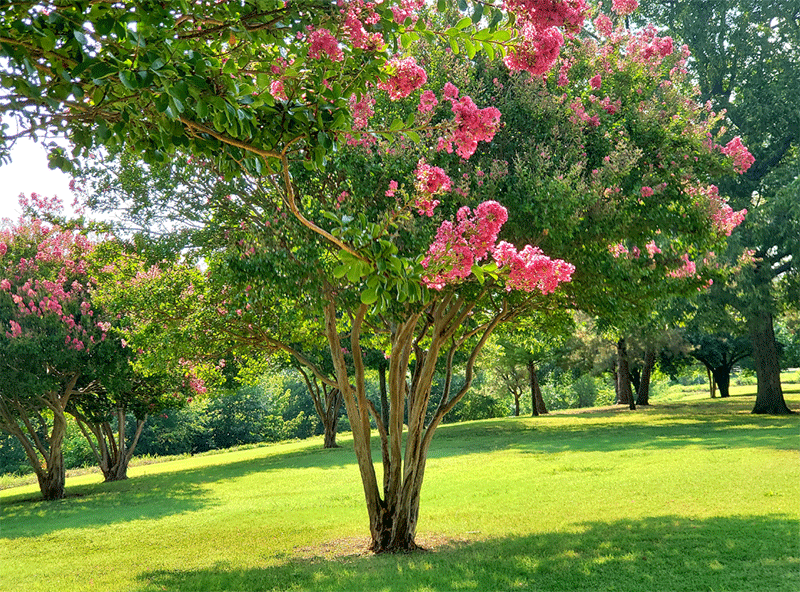
Stop Crepe Murder! How to Properly Prune Crepe Myrtles for Healthy Growth

Stop Crepe Murder! How to Properly Prune Crepe Myrtles for Healthy Growth
Stop Crepe Murder! How to Properly Prune Crepe Myrtles for Healthy Growth
Crepe Myrtle trees, with their vibrant blooms and graceful form, are a beloved addition to many landscapes. To ensure these trees thrive and maintain their natural beauty, proper pruning is essential. In this comprehensive guide, we’ll delve into the valuable insights provided by the North Carolina State University Extension on how to prune Crepe Myrtle trees effectively.
Understanding the Basics
Before diving into the specifics of pruning, it’s crucial to understand the basic principles. Crepe Myrtle trees generally do not require extensive pruning for health and vitality. Over-pruning, often referred to as “Crepe Murder,” can be detrimental to the tree’s natural shape and overall well-being.
Timing Matters
The timing of Crepe Myrtle pruning plays a significant role in the tree’s response and subsequent growth. According to the NC State University Extension, the ideal time to prune is during late winter or early spring, preferably before new growth begins. This dormant period allows the tree to redirect its energy toward producing new branches and blooms.
Key Pruning Steps
-
Remove Suckers and Low Growth: Start by removing any suckers or low-growing branches at the base of the tree. These are the shoots emerging from the trunk or soil level. Clearing these ensures a clean trunk and promotes better air circulation.
-
Thin Out Crossing Branches: Identify and remove any branches that cross or rub against each other. Thinning out the canopy enhances sunlight penetration and air circulation, reducing the risk of disease and promoting a more open and balanced structure.
-
Selective Limb Removal: Choose specific limbs for removal based on their location and overall impact on the tree’s form. Aim to create a well-spaced canopy that allows light to reach all parts of the tree. Be mindful not to remove more than one-third of the canopy in a single pruning session.
-
Prune for Shape, Not Height: Focus on shaping the tree rather than drastically reducing its height. Crepe Myrtles naturally have an elegant, vase-like form, and excessive height reduction can lead to an unnatural appearance. Prune for balance and symmetry while respecting the tree’s inherent structure.
-
Deadheading Spent Blooms: While not a requirement for tree health, deadheading, or removing spent blooms, can enhance the tree’s aesthetic appeal. Cut back the flower clusters to a lateral bud or branch to encourage the formation of new blooms.
Tools and Techniques
Using the right tools and techniques is essential for a successful pruning session. Employ sharp, clean pruning shears for smaller branches and loppers for thicker ones. Make clean, angled cuts just above a bud or lateral branch to encourage proper healing.
Aftercare Considerations
After pruning, consider applying a layer of mulch around the base of the tree. Mulching helps retain soil moisture, regulates temperature, and suppresses weed growth. Additionally, provide adequate water during dry periods to support the tree’s recovery.
Conclusion
For more information about getting expert landscaping for your business, please call M&M Landscape Management at (910) 539-6274 or visit our website at https://mmlandscapemanagement.com. We are always ready to answer any questions you may have!
M&M Landscape Management | M&M Septic Management | Jacksonville NC | Onslow County NC | Pender County NC | Eastern North Carolina | Visit our ad at Topsail Coast Advertiser
Give M&M Landscape Management a call at (910) 539-6274 for more information about Landscape Management & Maintenance.
